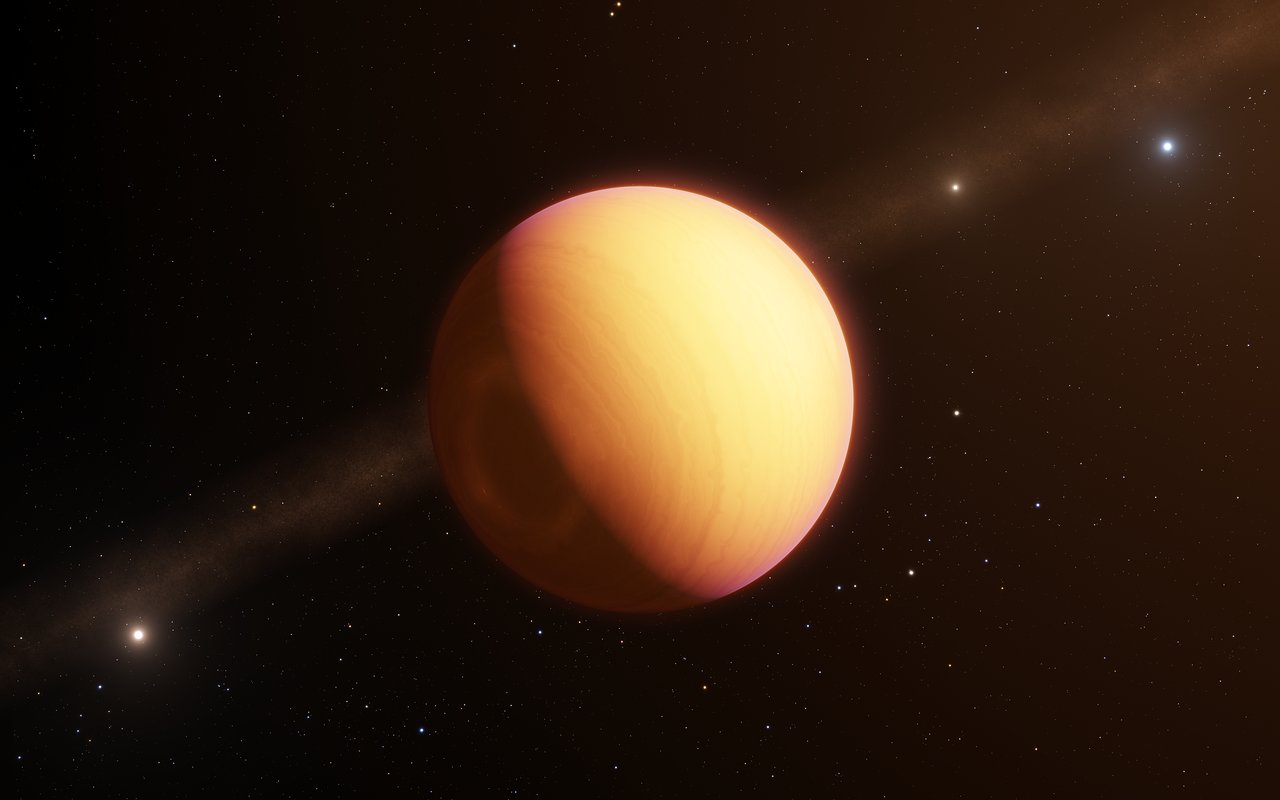Violent Planetwide Storm Spotted Above Distant Exoplanet
The planet's complex atmosphere has been revealed using optical interferometry.
New data from the European Southern Observatory shows raging storm clouds of iron and silicates swirling above a distant exoplanet.
The exoplanet, formally known as HR 8799e, orbits a young star called HR 8799, which is about 1.5 times the size of the sun and located about 129 light-years from Earth in the constellation Pegasus.
HR 8799e was first discovered in 2010 and is the innermost star of the HR 8799 system. An estimated 30 million years old, this exoplanet is believed to be about nine times the mass of Jupiter and takes approximately 45 Earth years to orbit its parent star.
Related: The Most Fascinating Exoplanets of 2018
Using the GRAVITY instrument on ESO's Very Large Telescope Interferometer (VLTI), astronomers uncovered the complex atmosphere of this storm-wracked exoplanet.
The GRAVITY instrument employs a technique called optical interferometry, which uses the light of four telescopes to see features that are 10 times more detailed than was previously possible, according to a statement from the ESO.
"Our analysis showed that HR8799e has an atmosphere containing far more carbon monoxide than methane — something not expected from equilibrium chemistry," Sylvestre Lacour, lead author on the new work and a researcher from the French space agency CNRS, said in the statement. "We can best explain this surprising result with high vertical winds within the atmosphere preventing the carbon monoxide from reacting with hydrogen to form methane."
Breaking space news, the latest updates on rocket launches, skywatching events and more!
The new data also revealed that the exoplanet's atmosphere contains clouds of iron and silicate dust, which, combined with an excess of carbon monoxide, suggests there is a violent planetwide storm.
"Our observations suggest a ball of gas illuminated from the interior, with rays of warm light swirling through stormy patches of dark clouds," Lacour said. "Convection moves around the clouds of silicate and iron particles, which disaggregate and rain down into the interior. This paints a picture of a dynamic atmosphere of a giant exoplanet at birth, undergoing complex physical and chemical processes."
Their findings, published March 27 in the journal Astronomy and Astrophysics, may reveal new clues about the formation of planets and planetary systems, ESO officials said in the statement.
- Kepler Space Telescope's 1st Exoplanet Candidate Finally Confirmed
- The Great Exoplanet Bake-Off: Why NASA Made an Oven-Fresh Alien Atmosphere in Its Lab
- Weird 'Sub-Neptune' Exoplanet Discovered by NASA (And It May Not Be Alone)
Follow Samantha Mathewson @Sam_Ashley13. Follow us on Twitter @Spacedotcom and on Facebook.

Samantha Mathewson joined Space.com as an intern in the summer of 2016. She received a B.A. in Journalism and Environmental Science at the University of New Haven, in Connecticut. Previously, her work has been published in Nature World News. When not writing or reading about science, Samantha enjoys traveling to new places and taking photos! You can follow her on Twitter @Sam_Ashley13.

